
Last Updated on
By Guy Sagi
You’re ready to survive—even thrive—when the unthinkable happens, but have you taken steps to ensure your guns, ammo, food and gear don’t fall victim to moisture and humidity long before you need them?
It’s fashionable for the mainstream media to paint preppers with a broad brush, focusing on those few who have lead-lined, Cold War-era survival shelters in their backyard, or eccentricity exponential enough to fuel ratings on reality TV. The portrayal ignores the millions of people prepared in some degree to survive a natural or manmade disaster, and perilously convinces too many others not to take a few, common-sense steps to ensure their family’s safety.
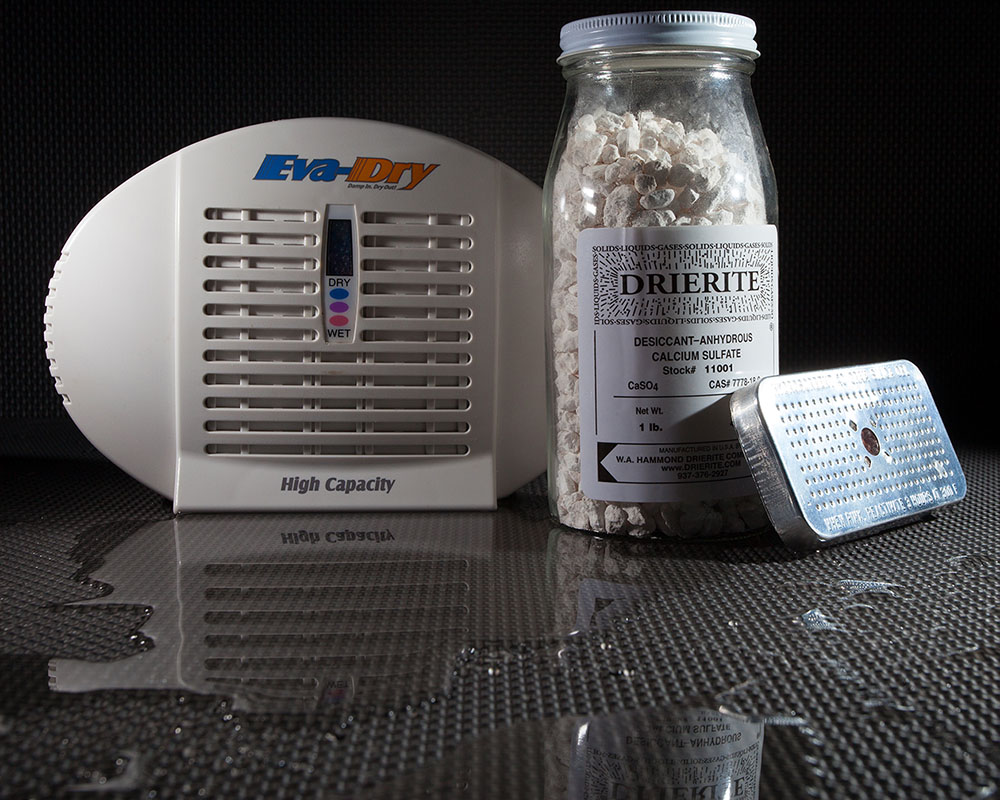
There’s good reason to keep emergency supplies around. In February 2013, storms packing unexpected power raked the northeast United States, leaving 650,000 homes and businesses without power—a painful reminder big-cities don’t provide immunity. Millions of homes went dark, some for weeks, after 2012’s Hurricane Sandy. Natural disasters don’t hold an exclusive, either. Terrorism, cyber threats and riots make it obvious a little “prepping” is wise.
Whether you’re investing heavily because you think Doomsday is near, or simply improving your supply methodically on a strict budget, waterproofing is only the first step in protecting your supplies from moisture. The next move is to prevent any interior humidity from condensing and ultimately rusting firearms, corroding ammunition, growing fungus on optics and ruining foodstuffs.
There are a variety of waterproof containers on the market, varying in size from re-purposed 55-gallon polymer drums, to gun- and gear-sized cases. Plano’s Shell Box Ammo Box, for example, has polymer construction and an O-ring to minimize the chances of corrosion or season cracking. Helvetica’s Modular Ammo Can provides the same protection from the elements, but its interior can be customized. For rifles, consider the Plano Tactical All Weather Single Rifle Case or the Pelican 1720, both viable options for travel or short-term storage to weather a serious storm. I purchased the latter after testing it extensively in during a Virginia winter and have used it on a number of trips. I can’t recommend it enough. For smaller items, like handguns and optics, the Armasight SKB Case fits the bill very well.
A little science explains the dynamics of a case’s interior as its temperature changes. Evaporated water in the air—humidity—is trapped inside any airtight container. When the interior temperature gets low enough that it can no longer stay in suspension (dew point), moisture begins to collect.
There isn’t a lot of water in there, but another factor increases the problem. Metal is an efficient thermal conductor, so if the bottom end of a rifle’s barrel gets cold, it chills the entire length, fast, turning it into a water magnet. Nearby objects probably won’t reach that temperature as quickly, giving the blued metal atop unchallenged access to remaining humidity.
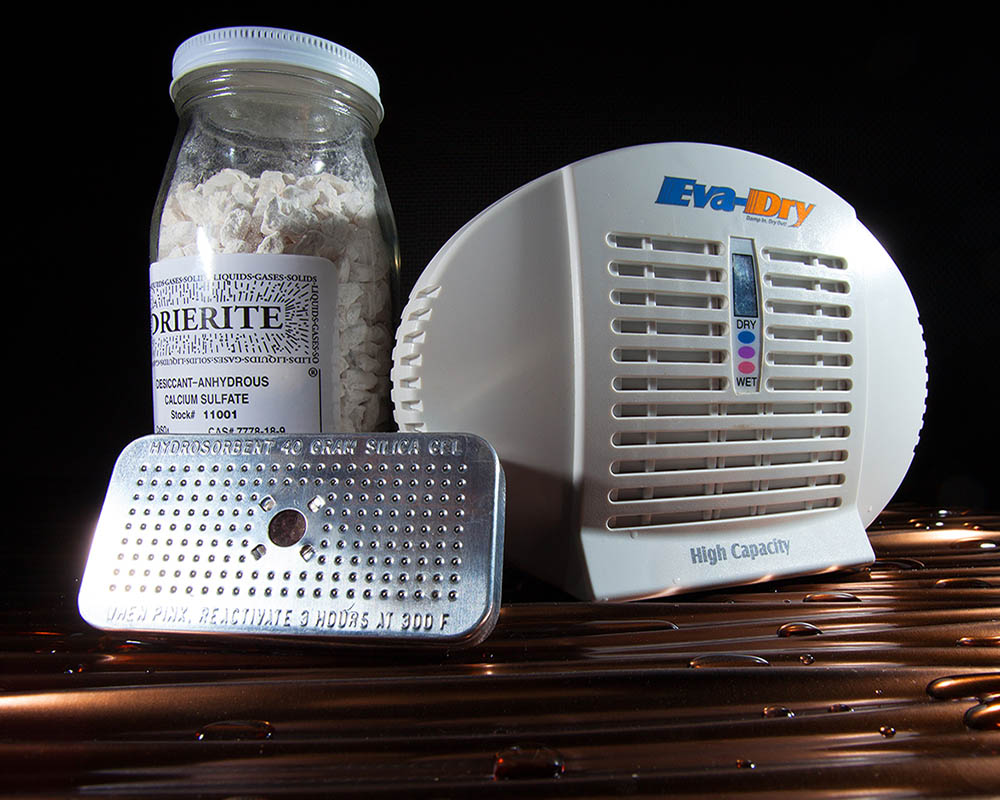
Expensive gun safes may seem immune from condensation concerns, but the majority are not 100-percent airtight. Obviously, humidity rushes in every time the door opens and there are microscopic leaks, but most high-quality units also have a small, removable plug at the back to run the wire to an electric heating unit (or light bulb). The bulb or element creates a slightly higher temperature, which in turn increases the interior air’s ability to hold water molecules in suspension. It also maintains mild gunmetal warmth to prevent condensation, which is very effective and maintenance free—until the power goes out.
That makes interior condensation a concern for everyone, regardless of the setup’s expense. The physics of dew point provides the second line of defense. The higher the humidity, the higher the temperature at which water droplets will start to form. Conversely, if you reduce the amount of moisture in suspension in the container, it has to get a lot colder for problems to begin. Doing so is as simple as harnessing the hygroscopic—water absorbing—properties of materials commonly referred to as desiccants.
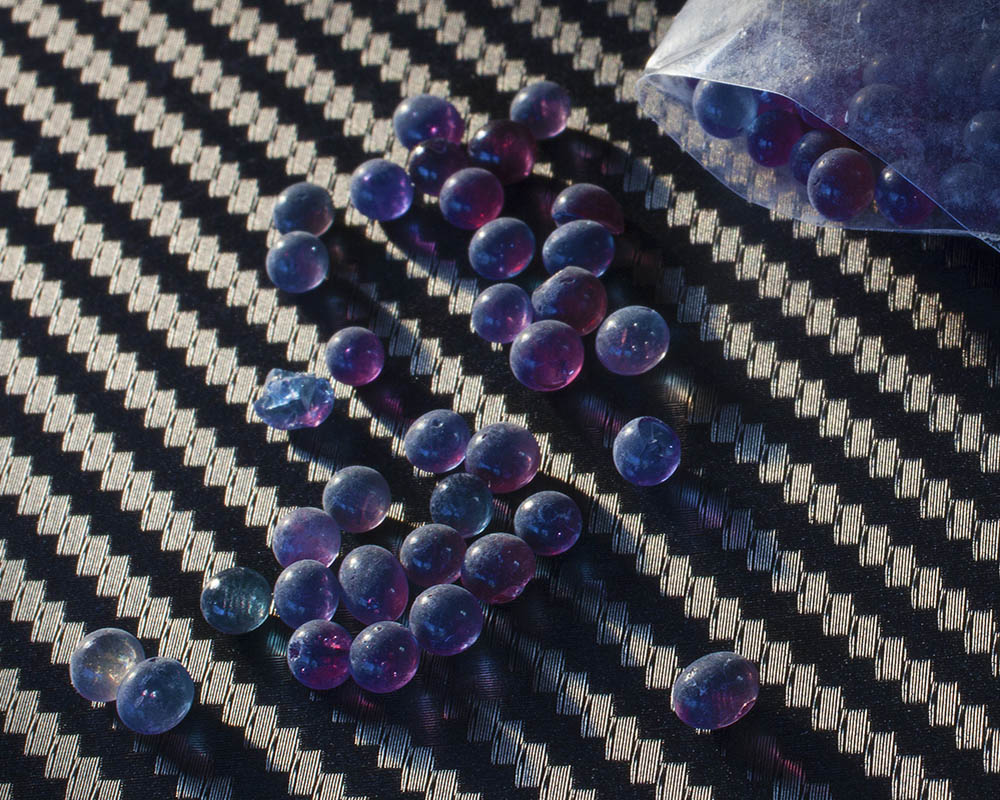
More than likely, you’re already familiar with some of the more common applications. The few grains of rice in a restaurant’s saltshaker take advantage of the grain’s ability to soak up humidity, thereby minimizing the changes of it clogging. If you purchased a new pair of shoes or electronics lately, that tiny white envelope that boldly states “Do Not Eat,” is in there to prevent moisture damage during shipment. A small container of the stuff is usually in new medicine bottles.
Before you toss rice into your gear box, or re-purpose those tiny containers, there are a couple of problems with either approach. Rice doesn’t come in airtight containers, so it’s already absorbed a lot of moisture by the time you take it to the checkout line. The same is true of the other containers: You have no idea how long they sat on a seaside loading dock or even if they’ll be effective. Add the fact that today’s generation of desiccants is the least-expensive investment you can make, and there’s no reason for you to scrounge.
Unfortunately, there’s no consensus as to which desiccant is best for any single application, and real comparisons are harder to find than Bigfoot. So we decided to test several prepper-recommended varieties for 96 hours, each, in an airtight MTM Case-Gard Survivor Ammo Can. Our results don’t provide a definitive answer, but should help you make a more informed decision.
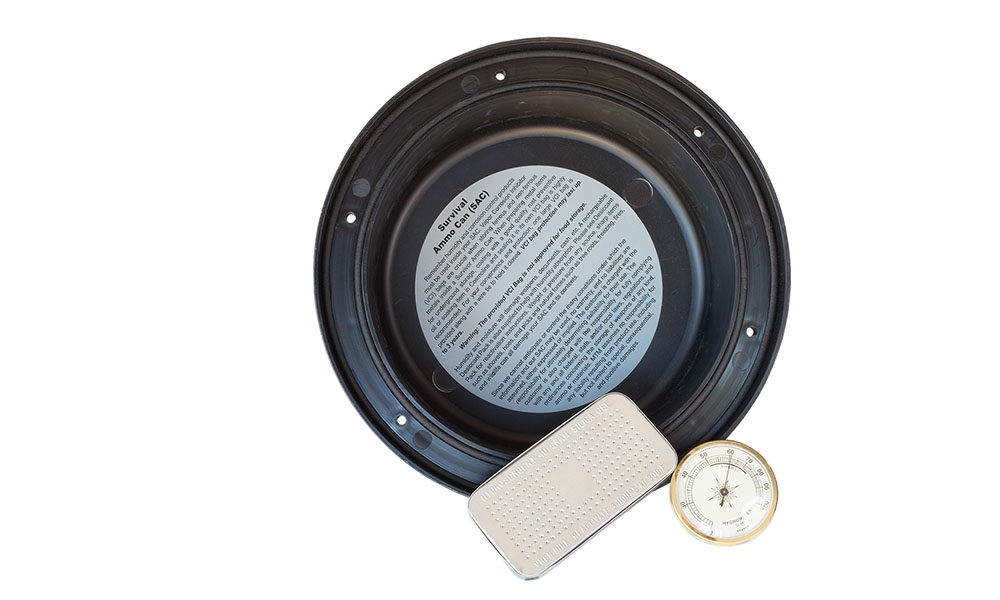
Kitty litter is one of those mixtures you read about a lot on prepper websites, so testing began there. It’s important to note that only those pet products made of silica-gel—a material with water-absorbing properties identified back in the 1600s—will apparently work. The moisture goes in and locks into the granules.
Forty ounces of the kitty litter and a hygrometer were sealed in the can. There was no change in the container’s humidity during the first 96-hour test.
I surmised the kitty litter’s apparently airtight packaging leaked, so I baked it at the prescribed silica-gel recharge rate (three hours at 300 degrees), and conducted five more tests. Average humidity dropped from 60 percent to 25.3 percent, however, the effectiveness varied wildly—dropping to only 43 percent in one case. Pre-bake, expect wild fluctuation and confine the mess somehow if you go this route.
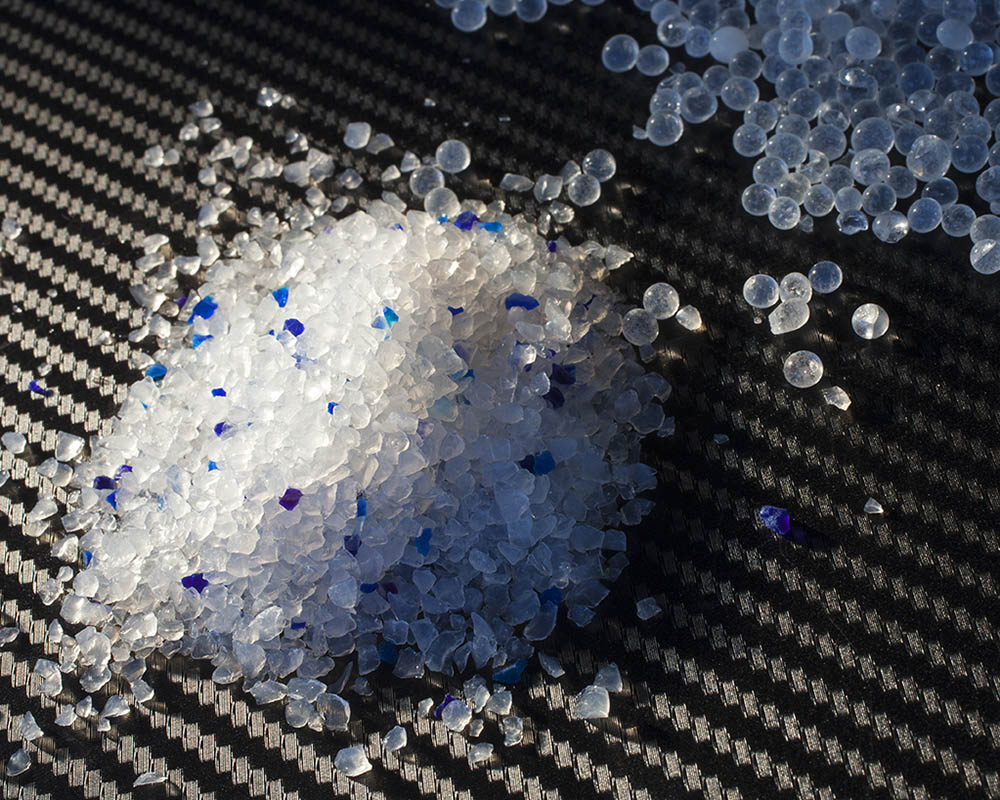
It’s important to note that some desiccants add a small amount of cobalt chloride to indicate when the compound has reached saturation and needs recharging. The Liberty Safe Mini-Canister turns pink when the moisture needs to be baked out and comes with 40 grams of silica gel in an oven-safe metal container. In identical testing, it dropped average relative humidity from 62 percent to 22 percent with precision. Even after five recharges it was showing no signs of weakening and it was much more consistent than its pet-friendly option. It may look old school, but at $8, the rounded granules are better at soaking up humidity and the small container occupies very little space.
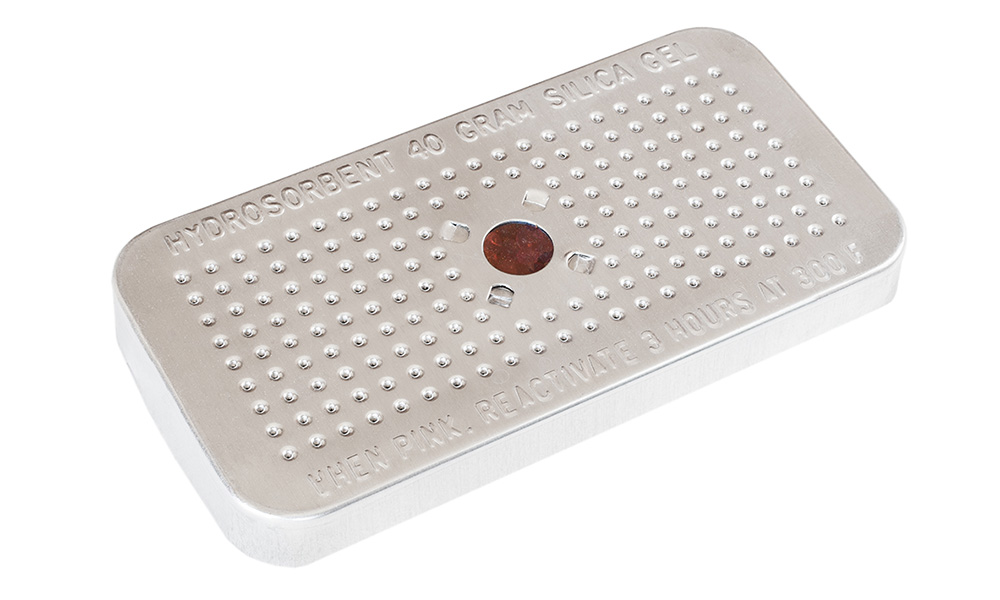
Eva-Dry makes indicating desiccant canisters that plug into a wall outlet for renewing (12 to 15 hours). In identical testing, they were every bit as effective as the Mini-Canister, although absorption was slower. These silica-gel units took nearly two weeks for the humidity to drop to the same level. An indicator window on the Eva-Dry turns pink when it’s time to recharge. There’s also more silica gel in these wireless electric versions, so they can handle bigger cases. The unit lever lost capacity through five tested recharges.
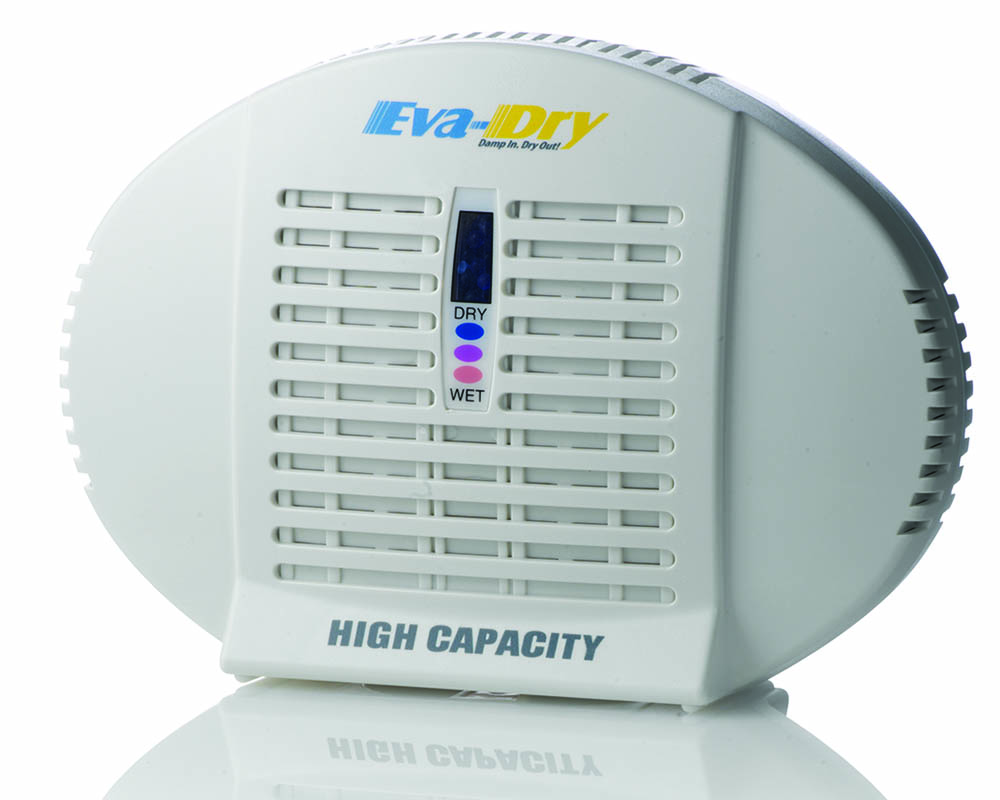
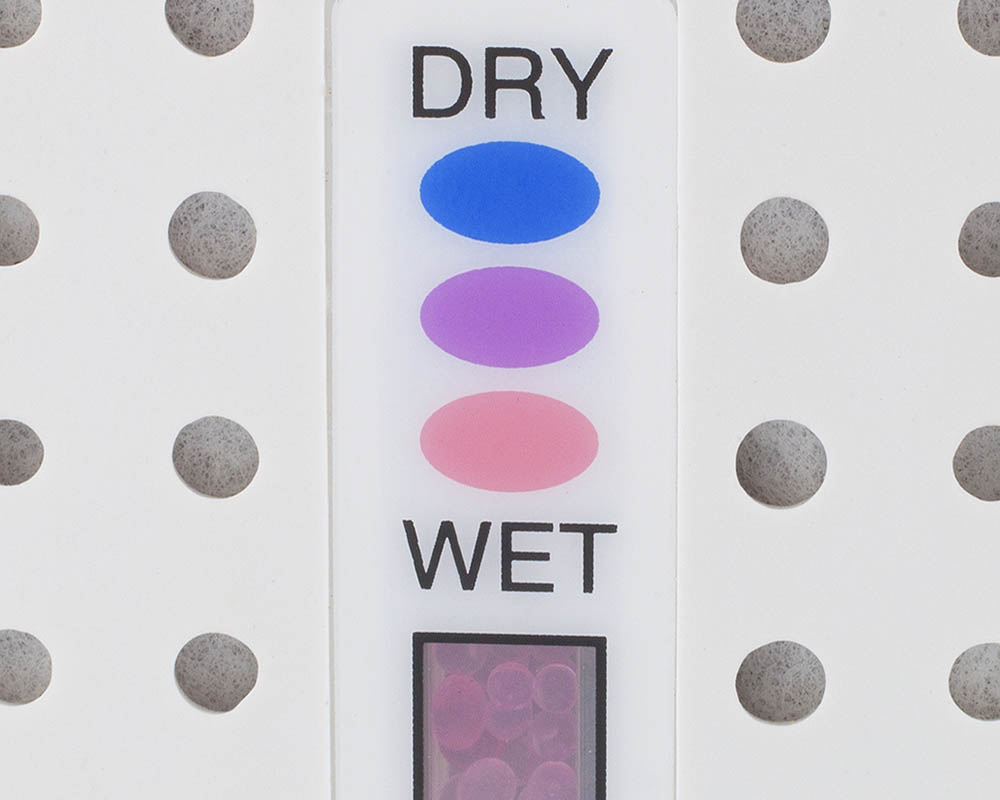
The company also has a two-pack, disposable option the co-owner regularly tosses in his carry gun’s case to avoid rust when traveling. The Eva-Dry 500 electric-recharge unit runs $34.95, the Eva-Dry 333 is $24.95 and the 150 disposable pack is $7.99.
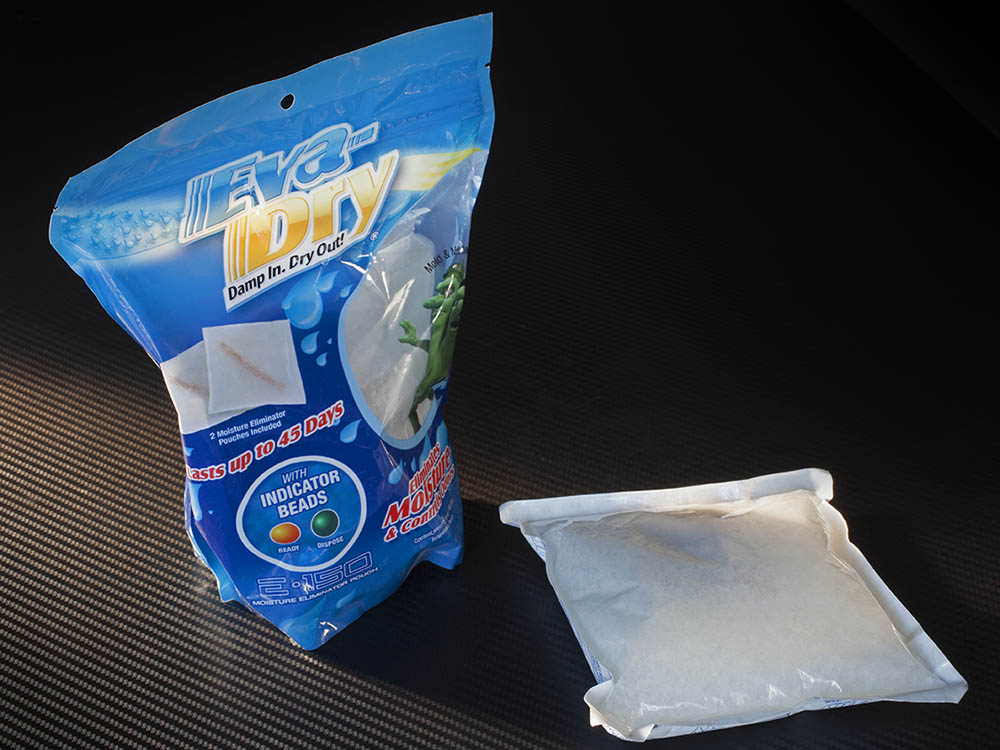
Stack-On’s10-pack of Safe-N-Dry silica-gel packets come in individual, airtight aluminum wrappers that are removed before use. A humidity indicator on the front lets you know when it’s time to bake for 10 hours at 200 degrees. The weight of each packet, including interior wrapping and indicator, is only 1.32 ounces, however (due to that light weight, wasn’t included in testing with the heavier units). The contents are still silica gel, but the diameter of each bead is about half the size of the others. Cost is around $11.
The real heavyweight during the tests turned out to be Drierite, an industrial desiccant made of gypsum—a naturally occurring mineral. One ounce of the No. 4 mesh (that’s the relative size of the pebbles) underwent an identical test and buried the hygrometer needle at 10 percent, the lowest it could go. It did so for four more times, dropping relative humidity 40 percent on the way. Results never varied through four recharges —two hours in the oven at 450 degrees.
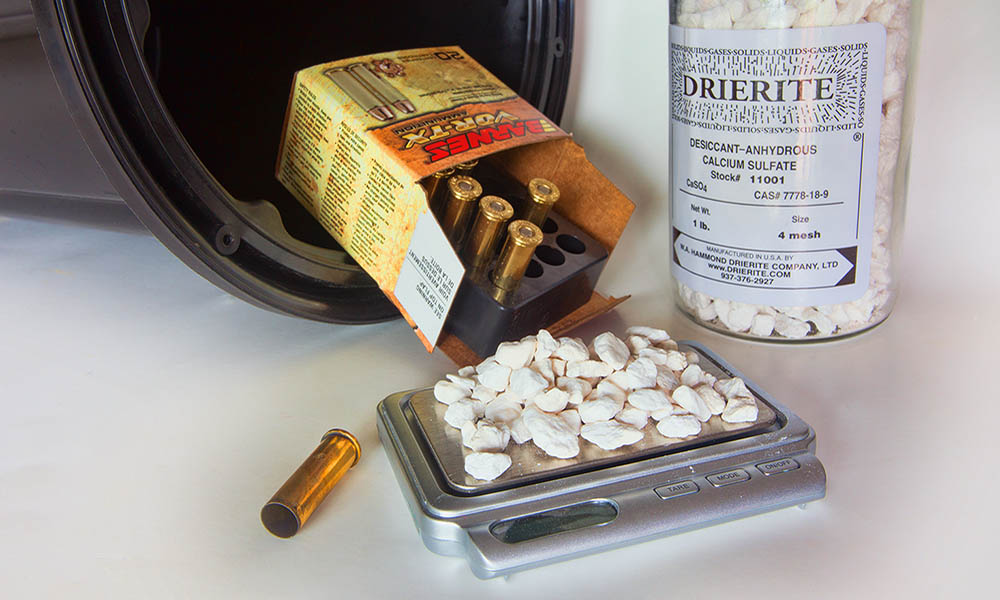
Drierite is used by scientists or by companies that need to keep large equipment containers free of moisture. A representative recommended the No. 6 he uses in his gun safe (inside an old tube sock), but warns putting 10 pounds of the stuff in there might crack wooden stocks. A 1-pound bottle of No. 6 costs $5.52, not including shipping and an indicating version is also available. It’s chalky, though, so use a separate container.
Both the silica gel and Drierite remain dry, even when fully saturated. There are some other commercial products out there that will spill water, defeating the entire purpose for a desiccant in your case. Avoid these like the plague.
In addition, if you’re taking your time to build up emergency supplies, keep a close eye on some of the newest products. More and more companies are offering ammo in cases that are—or could easily be—made air tight. Federal Premium, for example offers 5.56 NATO with an ammo can or buckshot, Fiocchi as well, and if Doomsday does arrive, it’s hard to go wrong with TulAmmo’s spam cans of .223 Rem.
Regardless what you’re protecting, and whether it’s to help you survive a wildfire, hurricane or long-term power outage, go airtight. No one will call you paranoid when you spend a few dollars more on a desiccant to keep your supplies safe, dry and unspoiled, especially when it’s rechargeable. It’s probably the least-expensive “prep” you can make.




Leave a Reply